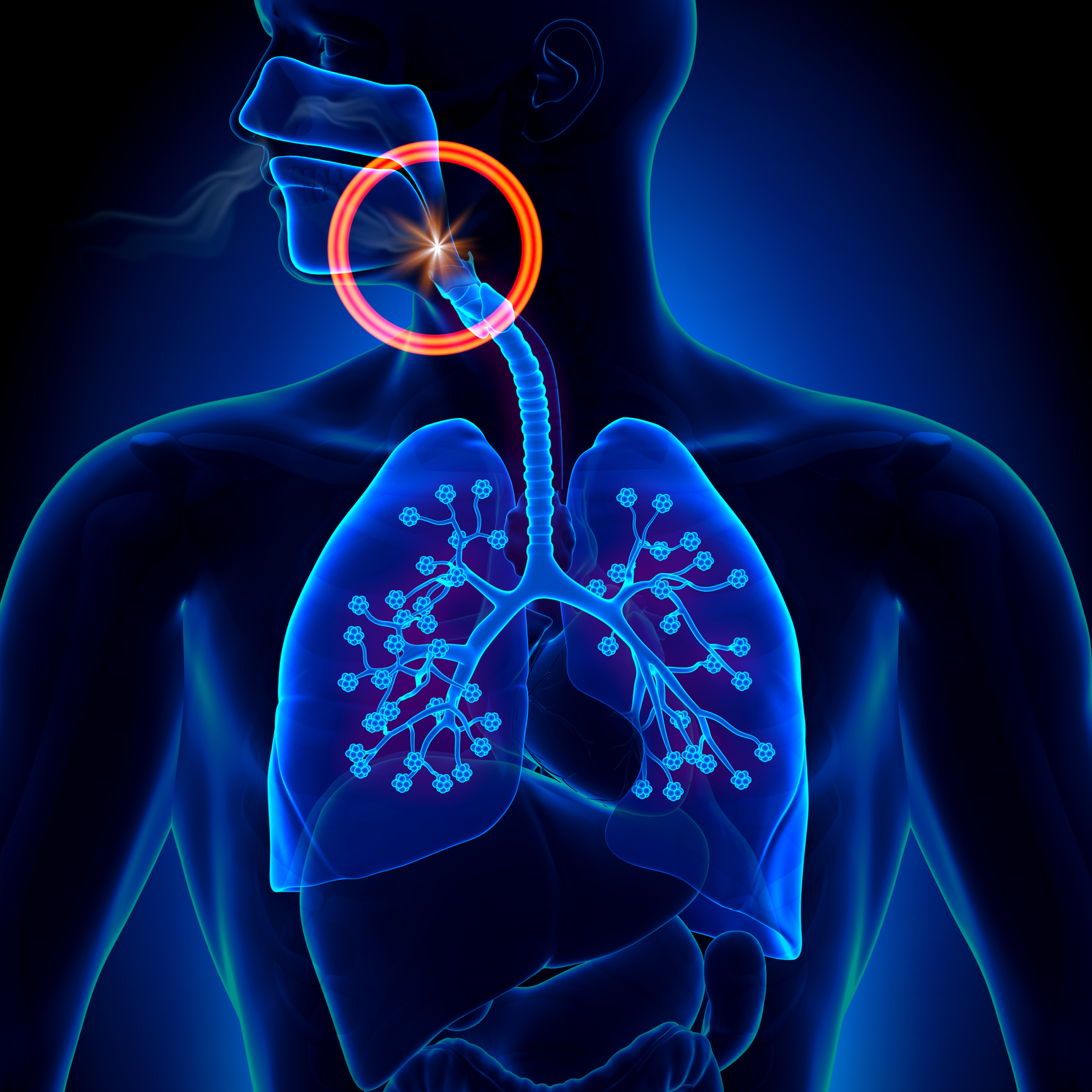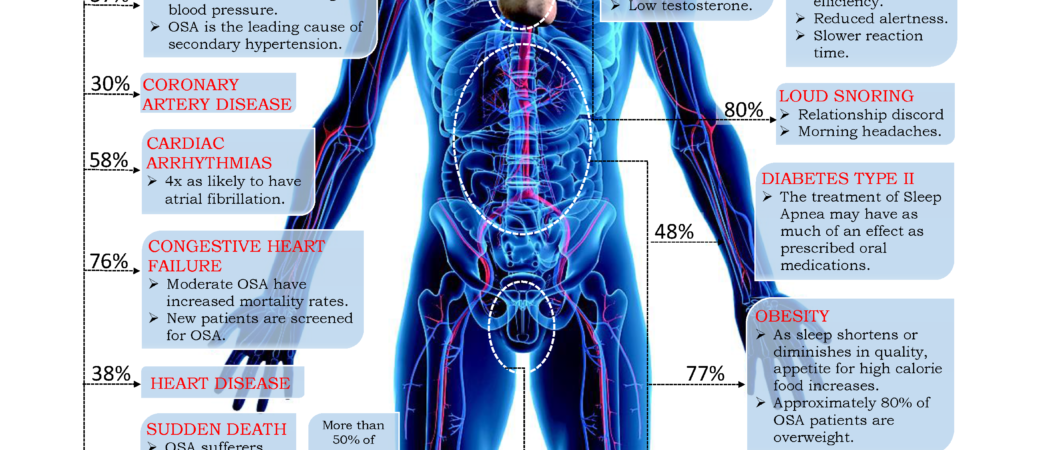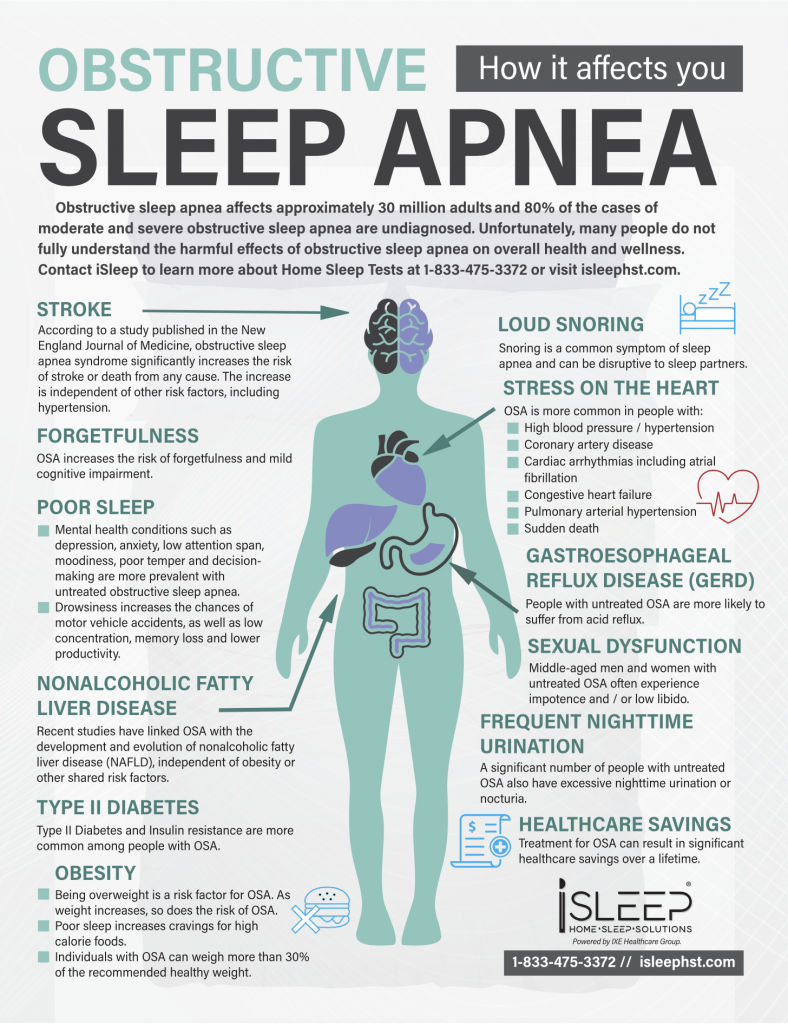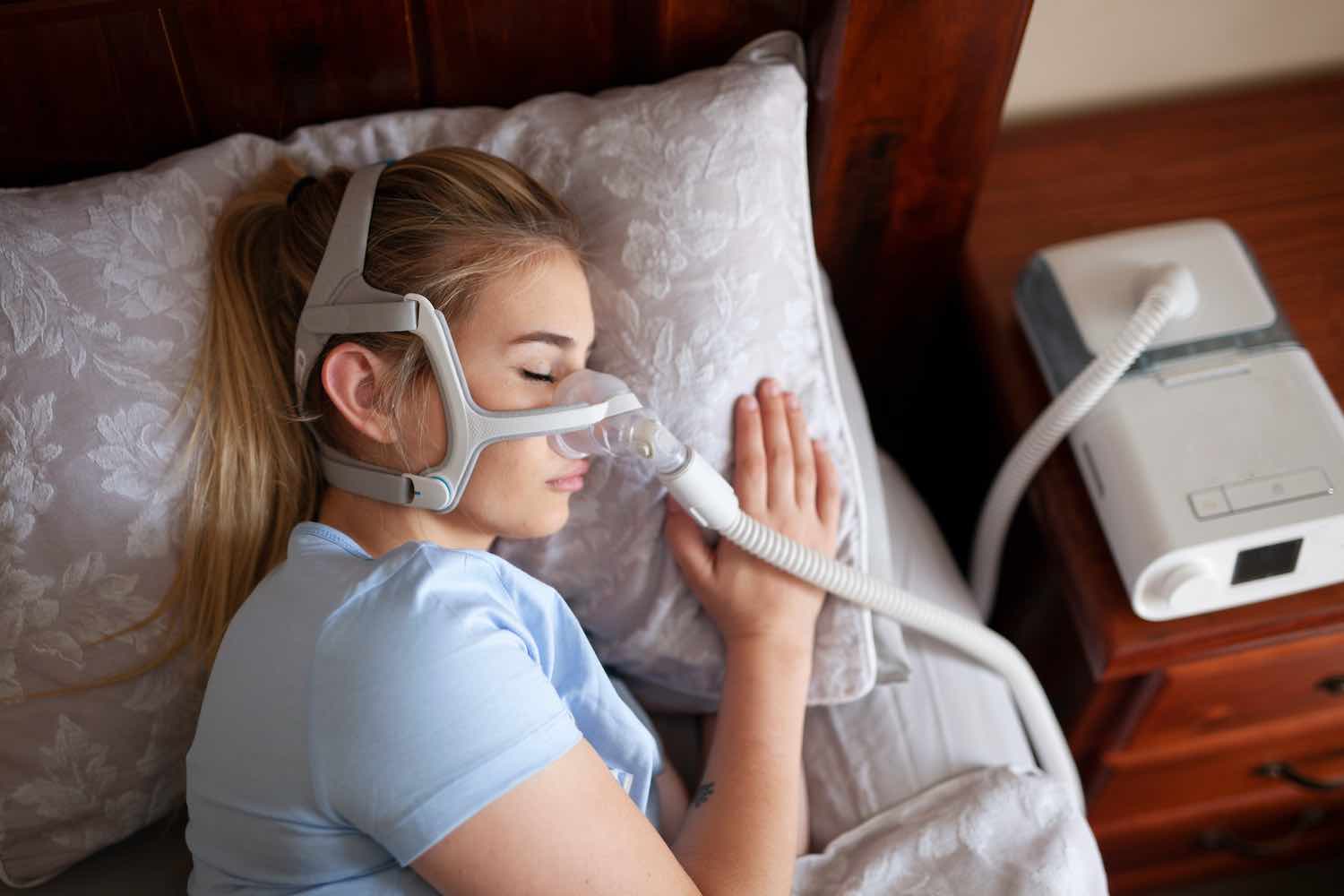It is estimated that more than 12 million individuals suffer from sleep apnea in the United States (Torpy, Lynn, & Golub, 2011). Sleep apnea is characterized by breathing, which stops for short periods during sleep. Two forms of sleep apnea exist: obstructive sleep apnea and central sleep apnea (Torpy et al., 2011). Obstructive sleep apnea is caused by a physical closure in the back of the throat (i.e., soft palate/tongue) which blocks air during inhalation. The other common form is central sleep apnea, whereby the brain stops ventilation (Torpy et al., 2011). Either manifestation of sleep apnea can inflict mild and deleterious affects upon the human body.
If left undetected, sleep apnea can cause a host of conditions including poor quality of sleep, excessive daytime sleepiness, weight gain, hypertension, heart failure, stroke, and even death (Torpy et al., 2011). Oxygen deprivation (hypoxemia) and excessive carbon dioxide accumulation (hypercapnia) are common byproducts of obstructive/central sleep apnea, and both conditions can induce unfavorable affects in the tissues and organs of the body (Torpy et al., 2011).
Several risk factors have been associated with individuals who have sleep apnea. Some of the risk factors include: obesity, large tonsils, large tongue, thick neck, hypertension, alcohol use, sleep medication use, hyperthyroidism, as well as sleeping on one’s back (Torpy et al., 2011). Diagnosis is determined by several measures, the most obvious being severe snoring following by cessation of breathing for several seconds. Severity of sleep apnea is measured by the frequency and duration of obstructed breathing, and such measures are taken by sleep studies in which breathing is closely monitored in addition to pulse oximetry (monitors the concentration of oxygen in the blood). Further tests may also be taken to determine damage caused by sleep apnea in other organs of the body (i.e., heart function) (Torpy et al., 2011). If an individual has been diagnosed with sleep apnea, several options exist to treat the disorder.
The most effective treatment for sleep apnea is through the use of a continuous positive airway pressure (CPAP) device. The device provides continuous gentle air pressure during sleep that maintains an open airway, circumventing blockages induced by either obstructive or central sleep apnea (Torpy et al., 2011). If an individual is overweight (a risk factor), it may be advised the he/she attempt to lose weight, since a small percentage of weight loss (i.e., 10%) can have dramatic affects in reducing severity of sleep apnea (Torpy et al., 2011). If a person drinks alcohol or uses sleep medications, it may be advised that the individual reduce intake, as said substances further relax the soft palate/tongue making sleep apnea potentially worse (Torpy et al., 2011).
In conclusion, sleep apnea can induce both mild (i.e., daytime sleepiness) and severe (i.e., hypertension/death) affects upon the human body. If an individual has some or all of the risk factors or symptoms outlined in the aforementioned sections, a simple sleep study can identify the existence and severity of sleep apnea. If sleep apnea has been detected, several interventions exist, which can help preserve the health and quality of life of those afflicted with the condition.
References
Torpy, J. M., Lynn, C., & Golub, R. M. (2011). Sleep Apnea. Research, 305(9), 956.
-Michael McIsaac





